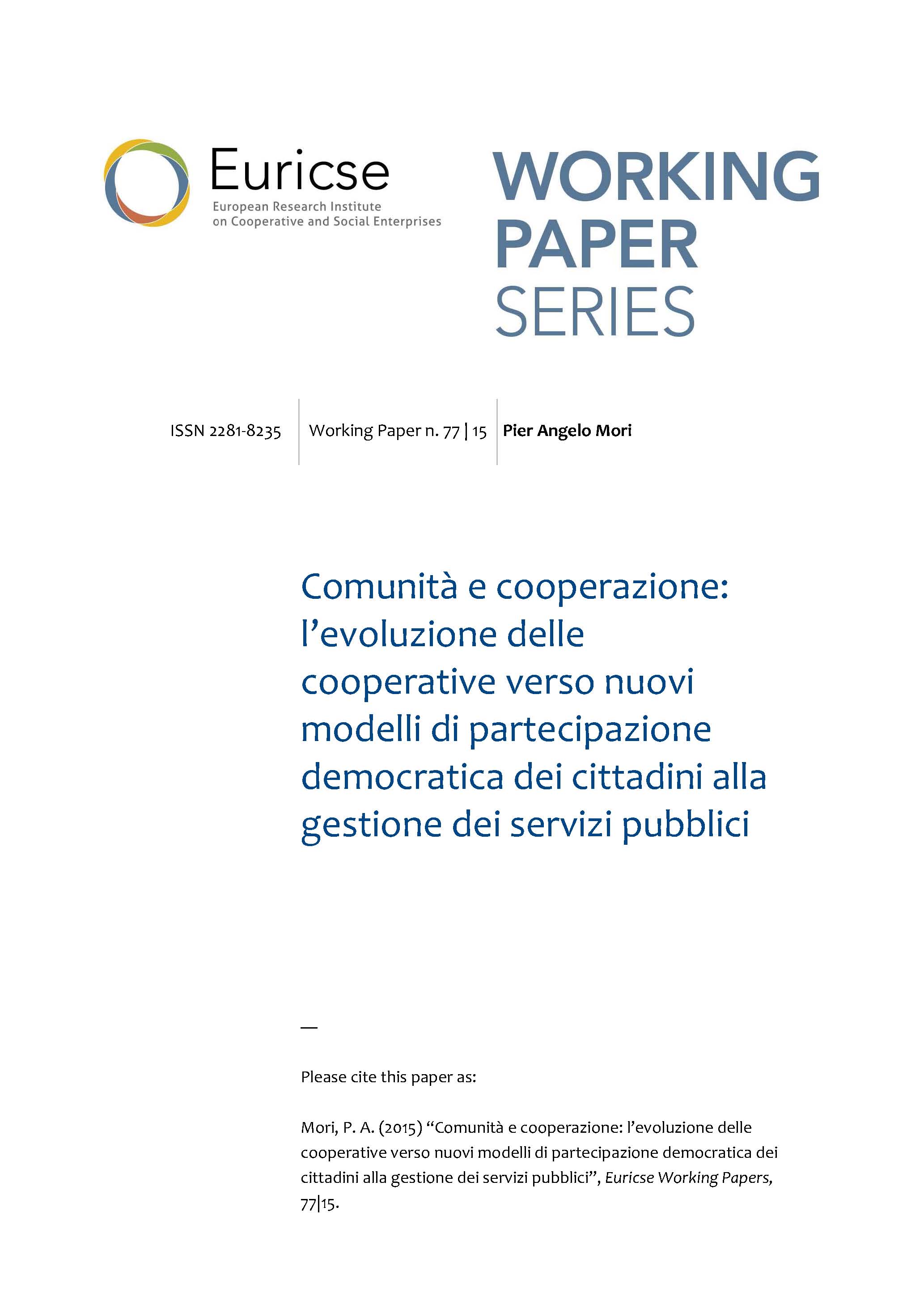WP 77 | 15 Community and cooperation: the evolution of cooperatives toward new models of democratic citizen participation in the management of public services
The community cooperatives that are spreading in many parts of the world are the culmination of an evolutionary process that has seen the progressive shifting of the center of gravity of cooperatives from particular social and professional groups to society as a whole. This evolution is marked by two main events. The first occurred in the early 19th century, when the first community cooperatives that served entire communities appeared. A further change occurred toward the end of the last century as the goals of cooperatives broadened to embrace collective welfare. Four types of cooperatives emerged from this evolutionary process, which, taken together, constitute a comprehensive classification of the cooperative universe, within which community cooperatives should be placed. The term is relatively new, and similar or identical organizations have been named differently at different times. Moreover, although new community cooperatives share some basic characteristics, they have marked differences within themselves and from earlier forms. For the sake of clarity, we elaborate a new concept of community cooperatives, consistent with the evolution of this organizational form and the general classification of cooperatives.
The core elements of the concept are community goods, land and citizenship, which are discussed in detail and with references to concrete cases. We then examine how new community cooperatives differ from historical ones. The paper concludes with a brief discussion of their future prospects.

